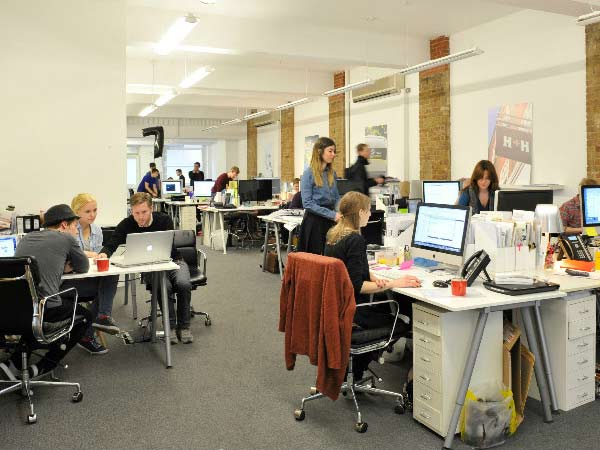Employees who work in open-plan offices feel worse and are more dissatisfied with their work
It is becoming increasingly common for employees to share the workplace with their colleagues in large open-plan office areas.
 In this way, companies and organizations want to save money, but also facilitate the interaction between the employees. However, a new study from CTF, Service Research Center at Karlstad University, Sweden, shows the opposite. The more co-workers that share the workplace, the less satisfied the employees are, and the more difficult they think it is to have a good dialogue with their colleagues.
In this way, companies and organizations want to save money, but also facilitate the interaction between the employees. However, a new study from CTF, Service Research Center at Karlstad University, Sweden, shows the opposite. The more co-workers that share the workplace, the less satisfied the employees are, and the more difficult they think it is to have a good dialogue with their colleagues.
Numerous private and public organizations have already adopted the concept of open-plan offices and many other companies are currently considering a switch from traditional cellular offices to such open layouts. Common arguments for investing in such open spaces are their claimed cost efficiency and flexible layout; their assumed ability to facilitate interaction among employees; and, ultimately, their presumed potential to improve work performance and productivity.
In a new study researchers have investigated the associations between office type (cellular office, shared-room office, small open-plan office, and medium-sized open-plan office) and employees’ job satisfaction, well-being, and ease of interaction with co-workers.
“The results show a negative relationship between the number of co-workers sharing an office and employees’ job satisfaction. This association was mediated by ease of interaction with co-workers and subjective wellbeing, with employees working in small and medium-sized open-plan offices reporting lower levels of both these aspects than employees who work either alone in cellular offices or together with up to two colleagues in shared-room offices”, says Ph D Tobias Otterbring and continues:
“The open-plan offices may have short-term financial benefits, but these benefits may be substantially lower than the costs associated with decreased job satisfaction and wellbeing. Therefore, decision-makers should consider the impact of a given office type on employees rather than focusing solely on cost-effective office layout, flexibility, and productivity.”
They study was recently published in Scandinavian Journal of Work, Environment & Health. The article ”The relationship between office type and job satisfaction: Testing a multiple mediation model though ease of interaction and well-being” is written by Tobias Otterbring, Jörg Pareigis and Erik Wästlund at CTF, Service Research Center at Karlstad University, Sweden, and Alexander Makrygiannis and Anton Lindström at Aarhus University, Denmark.
Source: Karlstad University
Full bibliographic information:
”The relationship between office type and job satisfaction: Testing a multiple mediation model though ease of interaction and well-being” Otterbring T, Pareigis J, Wästlund E, Makrygiannis A, Lindström A. Published in Scandinavian Journal of Work, Environment & Health.




